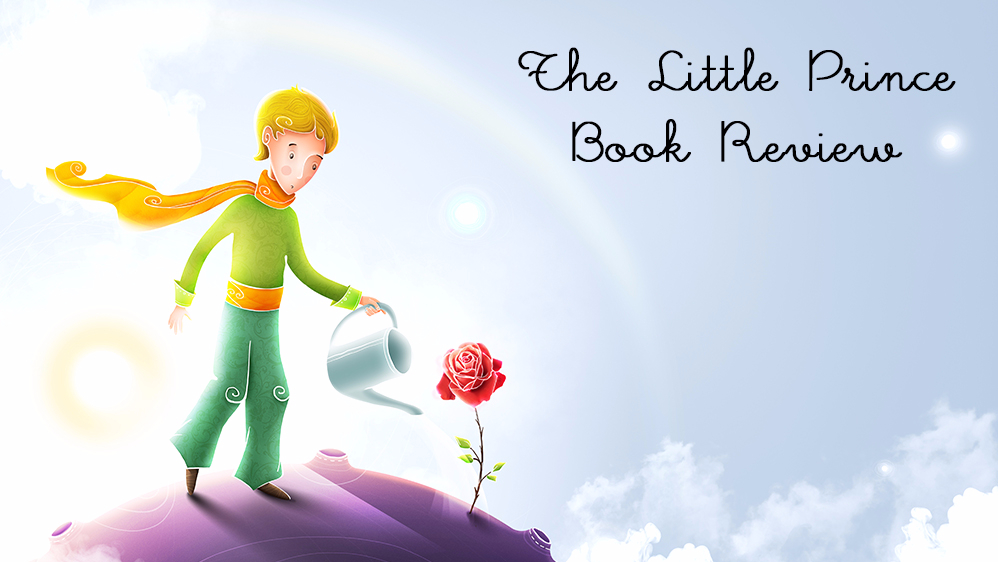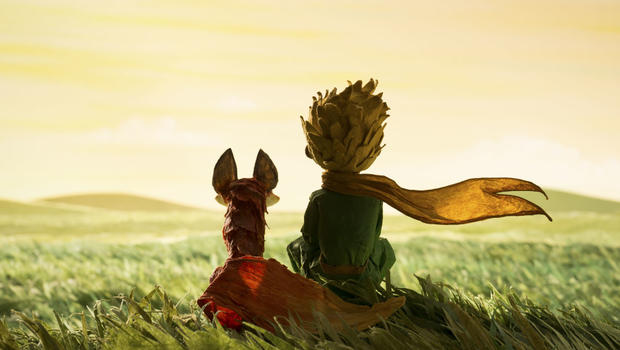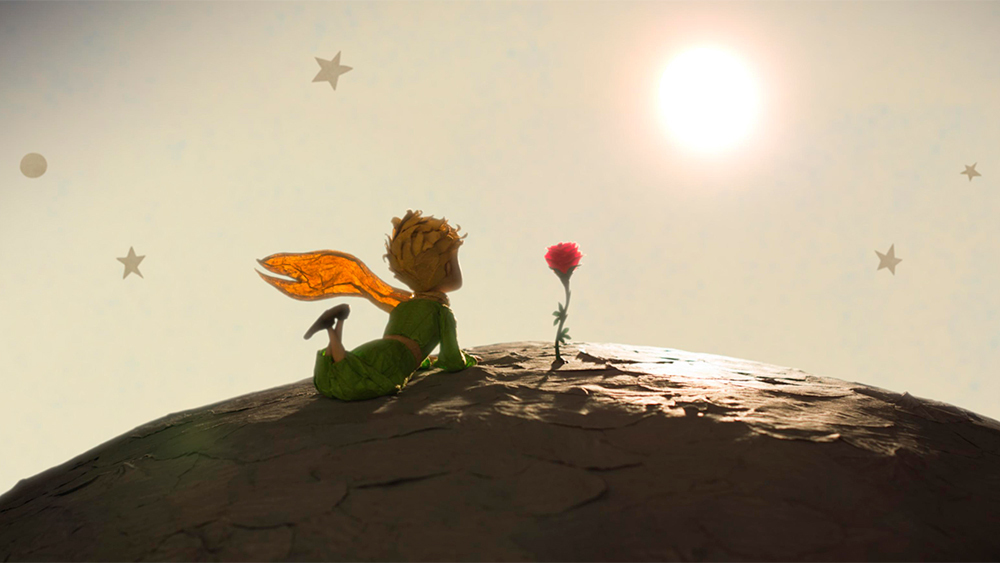Book Review: The Little Prince by Antoine de Saint Exupery


There are few books in the world literature legacy that equally satisfy the tastes of both children and adults. One of the first masterpieces that come to mind is probably The Little Prince by Antoine de Saint-Exupéry. This charming story takes the reader on an engaging trip all over the universe; a trip that results in fascinating discoveries and helps to realize true values. Adventures that happen during this intergalactic space investigation keep young readers’ eyes glued to the pages of the book, whereas the novella’s hidden meaning attracts a grown-up audience. For this reason, it is impossible to classify The Little Prince as children’s literature or adult literature: the book sends a relevant message to the readers of both age groups. Moreover, each generation extracts important lessons from the story. Below you will find a review of the book that will help you uncover all the secrets of this charming story.
Antoine de Saint-Exupéry and The Little Prince history
A wonderful book is usually a product of an extraordinary writer. The author of The Little Prince was truly that kind of man: adventurous, courageous, hopelessly in love with flying. Having turned his lifelong passion into a full-time job, Antoine de Saint-Exupéry quickly became known as a remarkable French military pilot who delivered mail across continents. His thrilling and sometimes dangerous trips over the Sahara Desert and the Andes found their display in The Aviator (1926), Southern Mail (1929), Wind, Sand and Stars (1939).
The latter is centered around a horrible autobiographical event: Saint Exupéry’s hazardous attempt to break the speed record, which led to the plane crash in the Sahara Desert. Together with his navigator, he got stuck between life and death with almost no food or water. Their struggle ended thanks to Bedouin coming by and finding them desperately exhausted, dehydrated and hallucinating after four days in a desert. Probably, that accident inspired the setting of The Little Prince: the Sahara Desert, plane crash and its pilot left in the middle of nowhere.
Not only the setting but also the ending of the novella alludes to mysterious events from the author’s past: Saint-Exupéry left our world silently, without any explanation. He literally vanished without a trace. During World War II, he left occupied France and joined French Air Force, flying reconnaissance missions. In 1940 he traveled to the US and had to stay there for long 27 months. For this reason, his magnum opus was published far away from his Motherland.
When was The Little Prince written? It happened in 1942 in Long Island, NY, USA. Silvia Hamilton, his friend, was handed a real treasure: the author’s manuscript and his own watercolor drawings stained with coffee and holed with cigarette burns. The Little Prince illustrations together with original manuscripts were exhibited in the Morgan Library & Museum in New York to honor the story’s 70th anniversary.
Triple genre of The Little Prince
Antoine de Saint-Exupéry skillfully combined the features of three different literature genres, so The Little Prince is considered to be a mix of parable, allegory, and fable. As a parable, it holds significant moral value to the readers, fulfilling a didactic function. Moral lessons about relationship, responsibility, and commitment aim to teach the audience rather than merely entertain.
Being an allegory, the story conveys two meanings: a literal one and a figurative one. Basically, a reader is presented with a story of unexpected travel experiences of a weird boy. However, every event and every dialogue in a book holds deep symbolism and hidden meaning.
Finally, The Little Prince is also a fable, since the author grants inanimate objects the ability to speak and think. Both animals and plants reflect human characters, which appears to be captivating for kids, making the process of reading a pleasure for them. This is why the book is so popular among all age groups: kids perceive it as a story with a thrilling plot, whereas older readers think deeper and try to recognize the core essence of allegories and symbols, enjoying ‘decoding’ the treasures hidden in verbal images.
The Little Prince characters
The story demonstrates an incredibly deep gap between childhood and mature age, illustrating how differently kids and adults perceive life. It is best revealed through the dialogues of two main characters who share their adventures. Apart from them, there are other characters of minor importance, each serving as embodiment of some remarkable feature. So, minor characters from a relevant background help the main hero to grasp the real state of things, hence contributing to the general concept of the story. The Little Prince characters analysis emphasizes the purity of children as opposed to weird and often wrong principles of the adults.
The Narrator
He lands his plane in the desert due to an engine trouble. While repairing it, he encounters a pale boy with curly gold hair who approaches him with a request to draw a sheep. The Narrator then shows him his own childhood drawing of a boa eating an elephant. When he was a kid, adults could never guess what he meant by that sketch and insisted on him quitting drawing. Surprisingly, the curly boy immediately understands the inner meaning. Such an extraordinary acquaintance initiates friendship between these two heroes. Later on, the Narrator feels a strong bond that ties him with his little friend, reminding him of a sincere, naive, optimistic world of childhood and its real values.
The Little Prince
The curly boy was given the name “the Little Prince” by the narrator. He comes from a distant Asteroid B-612 and considers this star to be his home for which he bears full responsibility. The boy takes care of his own little planet grubbing up harmful baobab roots and cleaning out three tiny volcanoes in order to prevent eruptions. Above all, his mind and heart belong to a Rose that once appeared on his planet. She is far too arrogant and demanding, so the Prince comes to the point when he cannot stand her anymore, though he still deeply loves her. He sets off on a long trip investigating five nearby planets aiming to find answers to eternal life questions. Finally, the boy visits the Earth and makes friends with the Narrator. The man becomes the one who is honored with the Little Prince’s trust. Therefore, two of them ponder over the essence of life based on their mutually shared experience. The Little Prince then feels it is high time to come back to his Rose and protect her again. Even though he prepares to leave the Narrator, he wants to be remembered: every time the Narrator looks at the starry sky, he is reminded of the Prince and their friendship.

The Fox
He is the one who teaches the Little Prince the most valuable lesson: essential things can only be seen by heart, not eyes. That explains everything to the main hero, including his relationship with his Rose. The Fox asks the Prince to tame him as ‘taming’ means surrounding someone with love, kindness, and appreciation.
The Rose
Being the Little Prince’s property and totally depending on him, she behaves as if she is a master, and the Prince should please her. The Rose claims to be absolutely unique and the most beautiful ever, so everyone must adore her peculiarity. In fact, she is intolerable, capricious, and naughty, which makes her owner exhausted. The Rose represents the woman who is hard to love but whose vulnerability and grace irresistibly attracts others.
The King on Asteroid B-325
Having a rat as his only subordinate, the King assures the Little Prince in his almightiness and power. He believes that even the sun obeys his orders when rising and setting down. The King treats the Little Prince as his new subordinate which seems fairly ridiculous for the latter who sees nothing in such a man but the mindless desire to rule in the adults’ world.
The Conceited on Asteroid B-326
Being the only inhabitant on his small planet, he expects everyone to acknowledge his grandeur in beauty and intellect. Since there is no one to do that, he permanently praises himself. Consequently, the Little Prince realizes how presumptuous and self-centered the adults can be.
The Drunkard on Asteroid B 327
The man keeps drinking in order to forget the shame he feels about being a drunkard. He does not have any aims in life and lives each day in the likewise manner. The Little Prince finds out that he cannot help the desperate man, and leaves with the persuasion of how discouraged and depressed people may become if they lack any inner strength and wish for changes.
The Businessman on Asteroid B-328
Spending busy days and nights counting stars, he considers to be the owner of them. The man does not have any time to think whether dedicating his life to such a business makes sense. The Little Prince tries to persuade him that owning something means doing some favor to others, just as he does to his Rose. However, the man cannot comprehend such ideas, and the Prince leaves, disappointed at adults’ obsession and wrong standards.
The Street Lamp Lighter on Asteroid B-329
As the sunset comes, he lights the lamps on his planet. Day by day, he is doing the same job. With the pace of time, the asteroid’s turning speed is increasing, leaving the Lamp Lighter loaded with work. The Little Prince respects the efforts of this man, though adult’s life seems to be hopelessly busy and monotonous.
The Geographer on Asteroid B 330
His job is collecting important information about the world geography revealed by explorers. He does not bother to discover things on his own, but would rather wait for someone else’s news. The Little Prince is convinced that one should put efforts in order to get knowledge and wisdom, not merely sit and expect others to explain everything. As advised by the Geographer, the Prince decides to visit the Earth where he tells his adventures to the narrator. The diversity of characters in The Little Prince depicts the real world with various people, beliefs, ideas. The reader looks at the world through the eyes of the Little Prince and tries to comprehend together with him the way things should exist.
Themes in The Little Prince
The story depicts bright characters who assist in the reader’s decision-making process towards rediscovering life principles and values. Taking lessons from each episode enables the reader to distinguish important themes of the book, which are definitely worth attention. The key theme is the total contradiction between children’s and grown-ups’ perspectives of life. Sincerity, curiosity, passion, kindness inherent to kids are opposed to obsession, arrogance, apathy of the adults. The author manifests this theme with the help of other subsidiary ones:
- Necessity of enriching one’s knowledge vs. staying ignorant;
- Personal growth through new experiences;
- Acquiring wisdom through learning lessons from other people’s mistakes;
- Pursuit of true values in life;
- Meaningless waste of time;
- Dangers of self-concentration;
- Relationship equals responsibility;
- Love, friendship, and commitment;
- Realization of world’s narrow-mindedness and its impact on a person.
- Antoine de Saint-Exupéry raises core questions that need to be answered by everyone. Moreover, not only does he puzzle the audience with them but also prompts on the right decisions.
Analysis of the writing style of the author
Antoine de Saint-Exupéry developed his authentic writing style that can be surely recognized. The story is told from the first-person viewpoint: the narrator is an aviator who got lost in the desert. He lets the reader know only those things that he knows himself. The man recalls some of his childhood memories, then he gets acquainted with the Little Prince and describes their dialogues. Since the Prince appears to be an experienced traveler and adventure-lover, he cannot leave his adult friend without telling him valuable things he has recently learned. Therefore, the narrator listens more than he actually talks, focusing on the extraordinary collocutor.
The author’s tone of writing may be described as ‘mysterious and secret’. The Little Prince unexpectedly appears in the middle of the Sahara desert talking about interstellar travels; animals speak with riddles; asteroids lead their own lives with a single man on each of them; the Little Prince miraculously disappears and no one knows where and how to find him. In addition, the entire story is centered around finding answers to life mysteries that cannot be completely comprehended.
Together with the writing itself, the original book contains Antoine de Saint-Exupéry’s illustrations that complete the narration. Such a skillful technique makes the author’s writing style really unique.

The Little Prince literary devices
The masterly style demands a dexterous usage of literary devices. The Little Prince offers a variety of them:
- Symbol;
- Allegory (literal and figurative, inner meaning: through the demonstration of the Prince’s travels the author shows the process of searching for life answers);
- Climax (the Fox shares his main secret with the Little Prince, which results in the boy’s decision to return to his Rose);
- Foreshadowing (the Prince asked the pilot what planet he belongs to, hinting that the story has something to do with planets, and the boy is not a usual one; the snake told the Prince that if he wanted to come back to his planet, he would need to get bitten by her);
- Imagery (engaging description of extraterrestrial worlds);
- Paradox (in the Prince’s opinion, adults should grow wiser with years, but they seem to be getting ignorant, so one has to explain every single detail to them);
- Personification (the Rose is pictured as a beautiful lady constantly dressing up and enjoying herself).
The Little Prince symbolism
Each character of the story is deeply symbolic. Moreover, even inanimate objects convey allegorical meanings. For instance, stars: the aviator navigates thanks to them, but when he meets the Little Prince, the stars acquire new meanings. When the Narrator looks up at the stars, he now knows they hold his dear friend and is reminded of eternal life mysteries and worlds not yet discovered. Therefore, stars stand for life secrets and hidden treasures.
- The desert symbol represents hostile place without means for life, just as the narrator’s state of mind at that time. The Little Prince’s optimism was like finding the well in the desert for the pilot – it guaranteed survival.
- The water symbol in The Little Prince describes the spiritual food necessary for one’s life. Like water nourishes a thirsty traveler’s body, spiritual fulfillment feeds our souls. The human spirit is what feels thirst the most, not our body. Moreover, people should not take things like a gulp of cool water for granted, but appreciate life in its details.
- Baobab trees in The Little Prince is another bright symbol in the story. Baobab seeds sprout and soon become fatal to the planet if they are not uprooted in time. The same happens with any harmful habit that leads to inevitable outcome if not given up before it’s too late.
- Planet symbolism lies in reminding us we are the only ones responsible for the well-being of our own little planets (aka lives). Each of us has a choice: whether to follow the Little Prince’s example and make the planet protected from dangerous ‘roots’, spread care, kindness, and love, or turn our life into a cramped space centered around egotistical desires, obsessive tasks, routine, spending time meaninglessly, like asteroid inhabitants.
- The narrator told the story of his parents discouraging him after he had drawn the picture of a snake eating elephant. Adults saw merely a hat while the child’s imagination pictured something much greater. People perceive things differently but if you have a dream, protect it from the discouragement by all means.
- The symbolism of fox manifests itself through a famous saying about responsibility and essence of things. The Fox is like a life teacher who once appears and impacts on the way one sees the world. In fact, the Fox did not say anything sophisticated. On the contrary, his wisdom lies in the simplicity: the only thing needed is to stop rushing and listen to what the heart speaks.
- The Prince symbol meaning is revealed in two dimensions: as a pure-hearted child with optimistic ideas who lives in his own positive bright world, and as an open-minded person who strives to lead meaningful life devoting himself to people around.
Thus, symbolism of The Little Prince is one of the book’s crucial features. Each reader may find more symbols or reveal new tints in the already mentioned ones. Symbols give us an opportunity to think critically, and this is exactly what attracts open-minded audience.
The Little Prince quotes
The Fox appeared in the story for a short while only but no other character expressed the core essence of the story as eloquently as he did. His advice to the Little Prince is quoted worldwide, “Here is my secret, a very simple secret: It is only with the heart that one can see rightly; what is essential is invisible to the eye.” The Little Prince fox quotes cannot leave the reader indifferent, as they deal with the deepest spheres of human life. What the fox once said was later on repeated by the Little Prince and the narrator proving his true point of view:
- “It is the time you have wasted for your rose that makes your rose so important.”
- “The most beautiful things in the world cannot be seen or touched, they are felt with the heart.”
- “You become responsible forever for what you’ve tamed.”
- “The eyes are blind. One must look with the heart.”
- “Only the children know what they are looking for.”
- “One runs the risk of weeping a little, if one lets oneself be tamed.”
- “No one is ever satisfied where he is.”
Books like The Little Prince deserve eternal acknowledgment and attention. As long as people refer to them, they make a pause in their busy lives in order to think about the most important things like love, responsibility, and life goals.
Image credit: https://www.cbsnews.com